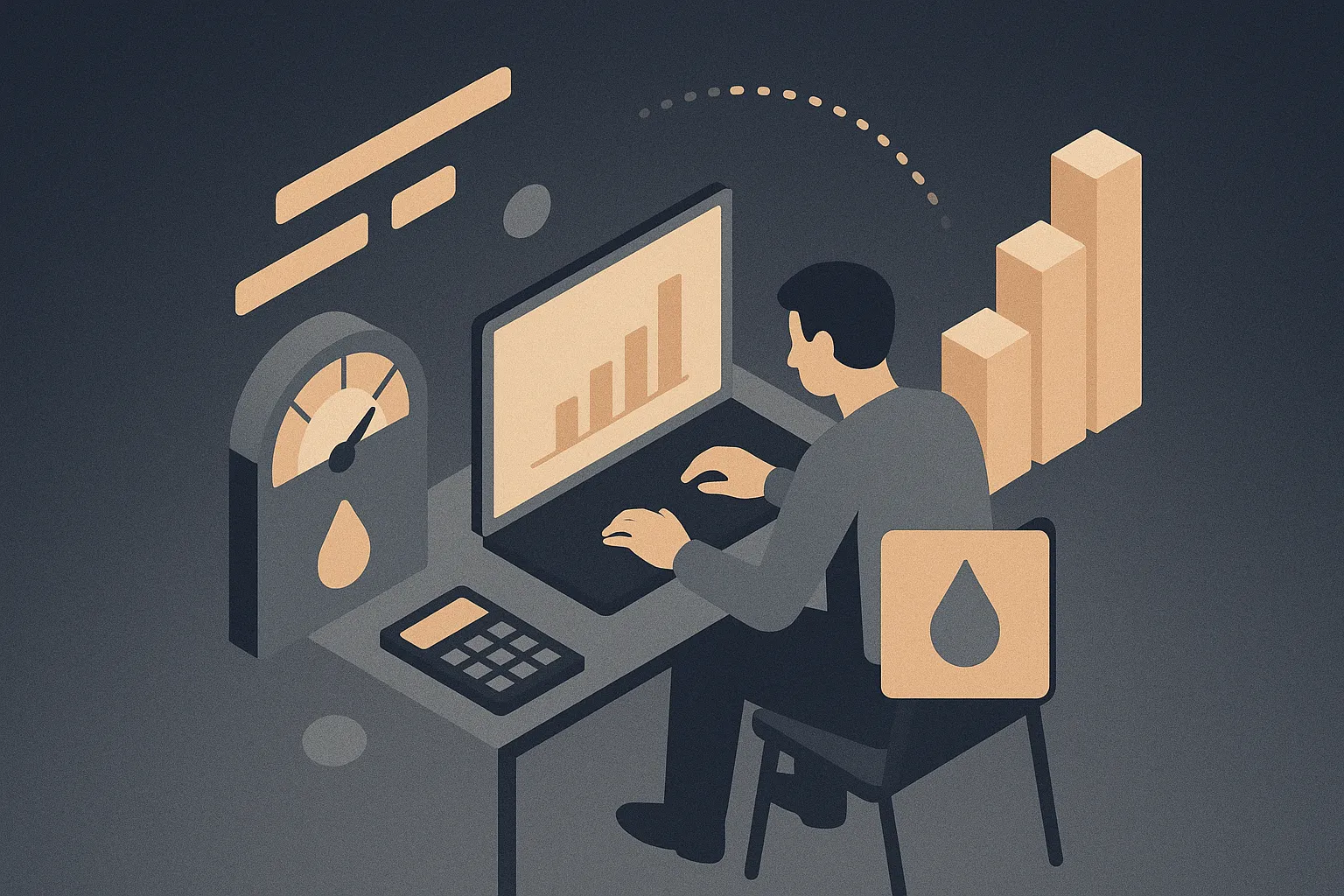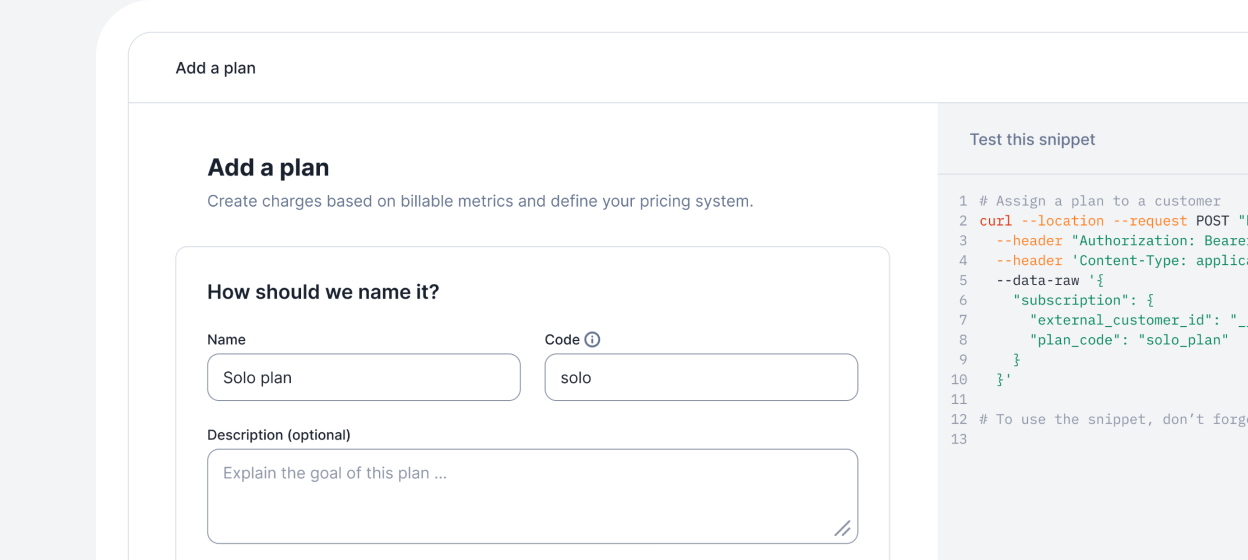Should you build or buy usage-based billing?

Build vs. buy is one of the oldest dilemmas in tech. For billing systems, this question is extra tough because billing is the financial backbone of your company. It looks easy from the outside, but becomes complex quickly. In this article, we'll share when you should build and when you should buy.
Why companies choose to buy usage-based billing systems
Whether you should build in-house or buy from a vendor is a tricky question in any category: Buying can mean paying an expensive subscription (plus vendor reviews, potential security risks etc. for something you may not use that much. Building means not paying a subscription, but putting engineers on something that's not core to your business. It also means never having the feature set of a commercial vendor.
There are good arguments for both sides in different categories. But billing is a difficult category to build.
Why building billing looks easy, but isn't
At first, billing looks relatively easy: You set up event capture, multiply events with the price per charge and then send that to a PDF generator that sends it out to customers.
In practice, homegrown billing systems often become a nightmare because there is so much complexity to reconcile:
- Customers in new geographies require different regulations and tax rates.
- What timezone do you bill in? What about leap years? Do you aggregate usage daily? Hourly?
- Upgrades and downgrades or churn and rejoining create additional complexity
And a million other things. Everything in billing is a solvable problem. The problem is that every edge case matters. If you were building your own feature flag tool, you can ignore most edge cases because they probably won't happen (and even if they do, almost nobody will notice). If you're building a billing system, any edge case could create compliance issues or vulnerabilities.
Reconciling every little detail usually leads to systems so complex they can't be replaced and require 10 full-time engineers to maintain. This makes buying a system seem obvious:
Accelerated implementation and reduced complexity
Implementing usage-based pricing can take up to a year, including changing service orders, billing systems, pricing pages, and training support and sales teams [2]. Purchased solutions compress this timeline dramatically.
Modern billing platforms like Lago enable implementation of usage-based billing systems in hours rather than months, making the process easy to build and maintain [3]. This acceleration directly impacts revenue recognition and customer onboarding capabilities.
Technical infrastructure advantages
Usage-based billing requires precise data collection in real-time, and integrating usage tracking with existing systems may require significant development effort where errors in data collection can result in inaccurate billing [4].
Scalability and reliability
Homegrown billing systems often lack capacity to handle increasing volumes or complexities of usage data, while manual processes are prone to errors and inefficiencies [4]. Professional billing platforms solve these scalability challenges from day one.
Managing complexities of usage-based billing requires specialized software with robust reporting features, flexible pricing configurations, and integrations with other business tools.
Focus on product
When you buy a billing system, you get to focus on your core competencies and building what brings value to your customers.
Challenges of buying usage-based billing systems
Running your entire billing on a proprietary third-party vendor creates dependencies in terms of flexibility, feature development and integrations. This often leads to engineering workarounds you initially planned to avoid by buying. Data governance becomes complex when customer billing information flows through third-party systems. Dependencies on external support can create bottlenecks during critical billing periods.
Technical requirements for usage-based billing systems
Core system components
Usage-based billing systems require metering to track and measure customer usage. This then needs to be translated into monetary value through predetermined rates. Customers are then invoiced so they can be billed for usage for predetermined billing periods with charges broken down by relevant time periods [8].
Infrastructure considerations
Accurate tracking and monitoring of customer usage poses primary difficulties, requiring precise data collection often in real-time or at regular intervals which can be challenging to achieve [4].
While implementing usage-based billing may seem technically complex, setting up accurate usage tracking requires the right systems but becomes manageable with proper platform selection.
Decision framework for build vs. buy
Business outcome assessment
- Revenue impact: Implementing usage-based billing leads to optimization in customer success and upsell opportunities, with many companies seeing significant revenue growth [10]
- Customer satisfaction: Flexible models align costs with actual product usage, leading to increased revenue potential for businesses and greater cost control for customers, fostering stronger customer relationships and encouraging product adoption
- Time-to-market: Implementation in hours versus months [3] directly impacts competitive positioning
Technical evaluation criteria
- Integration complexity: Integrating billing systems with software stacks enables accurate usage tracking, automated billing processes, and seamless customer experiences [11]
- Scalability requirements: Companies require usage-based billing software that monitors usage metrics and automates billing while handling complex billing scenarios and integrating with existing systems like CRM and accounting software [8]
- Customization needs: Evaluate whether standard platform capabilities meet specific business requirements
Implementation checklist
- Core competency: Buy if billing isn't central to your product's value proposition
- Resource constraints: As pricing gets more complex, businesses need new tools to support new models, with numerous software options available for metering, billing, automation, and pricing optimization [2]
- Timeline pressure: Buy for faster implementation when market timing is critical
- Scale requirements: Buy for high-volume event processing needs
Lago: The comprehensive usage-based billing solution
Lago addresses the build vs. buy challenge by providing an open-source billing platform that combines speed of implementation with unlimited customization potential. Lago's cloud solution delivers immediate value while maintaining the flexibility enterprises demand.
Rapid deployment capabilities
Lago enables implementation of usage-based billing systems in hours rather than months, making the process easy to build and maintain [3]. Lago can ingest events at scale while preventing duplicates [12], providing enterprise-grade reliability from day one.
Comprehensive pricing model support
Lago supports all pricing models, enabling creation of pay-as-you-go and hybrid plans through intuitive user interface or API [13]. The platform handles:
- Subscription billing: Automatic invoice generation for each customer according to plan models, with subscription fees billed at beginning or end of billing periods while usage-based charges are calculated at period end, including fees, taxes and customer information [12]
- Usage-based charges: Automatic calculation of customer charges and invoice generation depending on plan configuration [13]
- Hybrid models: Support for hybrid pricing including subscription fees and usage-based charges [3]
Advanced metering and analytics
Events provide information about customer consumption with highest granularity level, where any product feature requiring customer charges corresponds to specific events that can be triggered by actions or sent periodically, with aggregation processes converting events into billable metrics [12].
Enterprise integration capabilities
Lago API allows applications to push customer information and metrics from applications to billing systems, with integration possible through JSON HTTP API or Lago libraries depending on programming language or framework [14].
Key integration features include:
- API documentation for comprehensive development support
- OpenAPI specification for seamless integration
- Usage tracking guides for implementation best practices
- Pricing model templates for rapid deployment
Flexible deployment options
Users can utilize self-hosted versions to deploy Lago on existing infrastructure or request access to Lago Cloud to start using the solution immediately [12]. This flexibility addresses both speed-to-market and data sovereignty requirements.
Cost-effective architecture
Lago maintains transparency and won't nudge or lock users into specific tools in exchange for using the billing API [13], eliminating vendor lock-in concerns while providing professional-grade capabilities.
For companies requiring rapid implementation, proven scalability, and flexible pricing models, purchasing specialized usage-based billing platforms provides superior business outcomes compared to internal development. The technical complexity, compliance requirements, and revenue impact make Lago's comprehensive solution the strategic choice for companies seeking competitive advantage through pricing innovation.
Ready to implement usage-based billing without the development complexity? Explore Lago's capabilities to see how the platform can accelerate your billing implementation while maintaining the flexibility and control your business demands. Review the documentation to understand integration requirements, or examine pricing templates to see how leading companies structure their usage-based billing models.
Focus on building, not billing
Whether you choose premium or host the open-source version, you'll never worry about billing again.
Lago Premium
The optimal solution for teams with control and flexibility.

Lago Open Source
The optimal solution for small projects.

